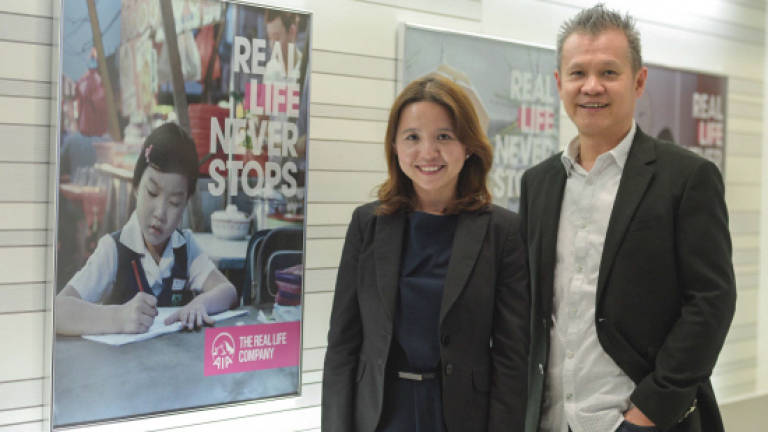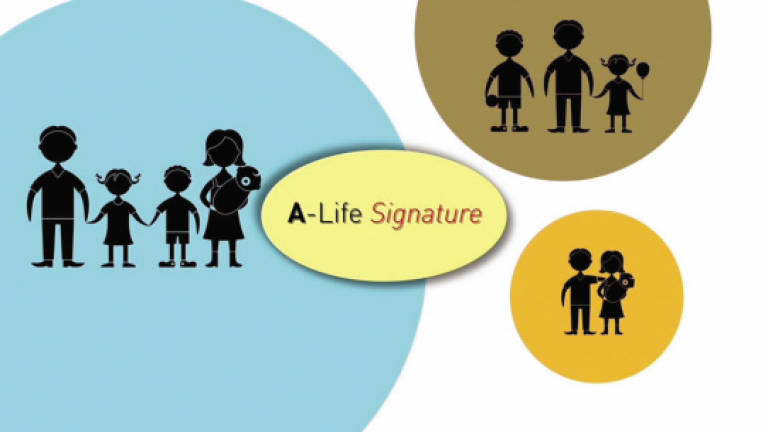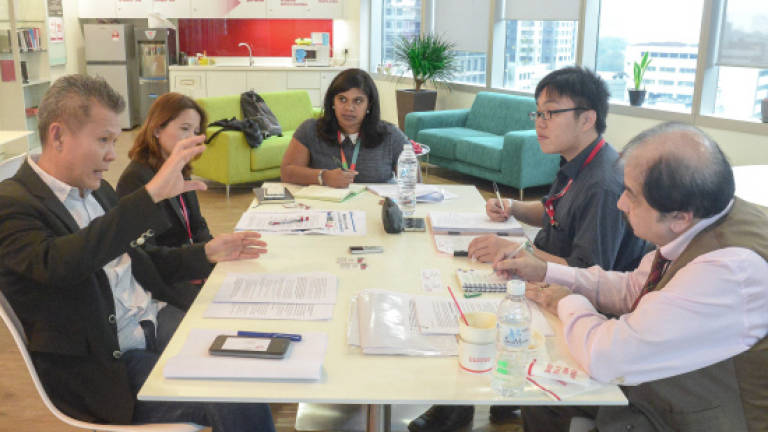AIA targeting sizeable mass affluent segment Part 1



IN an exclusive interview with theSun, AIA chief marketing officer Thomas Wong (TW), head of product marketing Chee Foong Wai (CFW) and corporate
communications manager Sonia Gomez (SG) share comprehensive insights regarding the concept development and marketing of A-Life Signature.
Through this insurance product, AIA is consciously pursuing the upper-middle to upper income segments in Malaysia.
theSun: Over the last 15 years, the upper-middle class has indeed grown substantially in most major Asian cities, including the Klang Valley and Penang. From the research executed by AIA in Malaysia, can you share some insights/estimates about the size of this upper-middle class segment earning between RM10,000 to RM40,000 per month?
TW: I want to qualify that we invested significantly in professional market research, both quantitative and qualitative research, through a combination of boutique agencies and large international researchers like Nielsen. These efforts have generated rich insights about this sizeable segment in Malaysia.
Our estimate is around six to 10% of the working population in Malaysia fall within this income bracket. We are classifying this as the “mass affluent segment”. Just look at any major national or multinational company and you will find this estimate is reasonable. However, only the government can provide absolute figures.
theSun: This mass affluent segment which is earning between RM10K and RM30K/40K per month are also under financial and mental pressure in trying to maintain their preferred lifestyles, besides planning for emergencies and retirement. Particularly, buying a house in Kuala Lumpur or Singapore for PMEBs at the age of 30 (without parental assistance) – is difficult nowadays. So one perceives a definite opportunity in helping this segment plan from an early stage of their professional career, an opportunity which other insurance companies did not pursue earlier. Why and how did AIA decide to target this opportunity-segment?
TW: There is too much focus on the middle-class and the mass market demonstrated particularly by fast moving consumer goods and the banking/financial sector. Also, for lower income classes, the main priority is to put food on the table and provide basic necessities. Their needs are completely different.
With that understanding, we reasoned that the upper-end of the middle class, of which Malaysia has a substantial number, provides a positive opportunity for AIA.
Generally, this group pursues a more expensive lifestyle and extravagant habits. Once a particular lifestyle has been adopted over many years, it proves hard to
change despite tough times and pressures like inflation, GST and rising costs. So, from the insights derived through research, the inspiration came for us to target this sizable group of Malaysians that are caught in the middle of these new economical changes. This group has been under served in the past across all categories of products.
On realising that, we conceived the A-Life Signature product, which was launched in December 2015. The basic idea is simple. It focuses on the needs – from the protection point of view – for this group of customers who are above the middle class, but require more due to their higher aspirations. For example, in the case of insurance protection, they are seeking at least RM500,000 coverage (instead of just RM 100,000).
We found that some companies are usually not prepared to go that far. Moreover, the response to our A-Life Signature has been very positive since launch. The take-up rate is also beyond our imagination, and it validated the research that we had done on the sizable mass affluent market in Malaysia.
theSun: Unlike Europe and USA, in Asian markets and capital cities, insurance is not perceived as such a vital need. Does AIA perceive some change now? Are people nowadays becoming more open in realising the value and benefits of insurance?
TW: I think it has changed. It is more of a mindset rather than lack of awareness about insurance. People tend to think that they will not need insurance much earlier in life and leave it to the time and situations when it becomes absolutely necessary. They fail to realise that premium increases as one grows older.
Today with Gen Ys’ parallel advancement in technology and multi-source information dissemination, the knowledge and realisation on the need for insurance and its benefits is spreading very fast.
You can observe the insurance industry is growing around 20% despite the tough times when other arms of the banking/financial sector are decelerating or negative.
In fact, AIA recorded 31% growth in new premium returns during the first half of 2016.
theSun: What are the general misconceptions which the market, including the upper-middle class, have about insurance?
TW: The primary misconception is that they can buy insurance later as they are young and healthy. Some think they will be wasting their money. They fail to realise that it is cheaper if they buy when they are young and healthy. When they are older, they may not even qualify for certain policies because they may have developed certain conditions that could disqualify them from being accepted by life insurance companies.
SG: We also found that a lot of people tend to think that employee/employer benefits are sufficient. When they switch employers or face tough times, they find themselves lacking coverage.
CFW: Further, people also have the misconception about the back to basic life protection. Many assume that they have enough coverage on medical, critical
illness, death, etc. This group often do not realise that RM500,000 is just the bare minimum. So with A-Life Signature, we are saying that you need at least half a million for coverage. This proposition and amount should serve as a wake-up call for this segment to get proper and sufficient coverage, consonant with their lifestyles.
theSun: Would it be safe to interpret that people are now more aware of economic cycles and financial pressures? Is this also opening the earlier “closed mindset”?
TW: Yes, the realisation of what insurance can offer has increased. In tough times like these, the coverage amounts are growing, which is reconfirming that people are placing more emphasis on the need for insurance coverage.
theSun: Is AIA the first company in Malaysia to be pursuing the mass affluent segment aggressively with such a specific, targeted product?
TW: Probably not the first company because other companies may have different versions with the same concept and similar targets.
theSun: Some folks fail to realise that jobs are no longer “parked/ stationary”, as people may be transferred across borders or in the region. So the need for appropriate insurance coverage has possibly increased.
TW: Yes. Also traditionally, insurance has not been part of the financial planning agenda. People would assume that financial planning, automatically involves just savings, deposits and investments. Today, through proactive promotion by insurance companies through their agency network and alternative distribution network, insurance has increasingly become more integral in people’s consideration during their financial planning.
Follow our column next week for part 2 of the AIA interview.
PRASHUN DUTT, Chief Marketing Officer of theSun, is a former Regional Media Director. After 14 years with advertising agencies JWT, McCann Erickson, O&M and Bozell, he has since leveraged this strong foundation in the global media industry with Times Publishing, Forbes, CNBC, MTV and The Economist. Besides socio-economic features and country reports he writes analytical articles on business, marketing, advertising and communications.
• Research and editing support provided by theSun Corporate Cell: Brian Chung and Michele Theseira.
• Creative visualisation, art and design: Ashley Seow
Feedback/Comment: pdutt@thesundaily.com